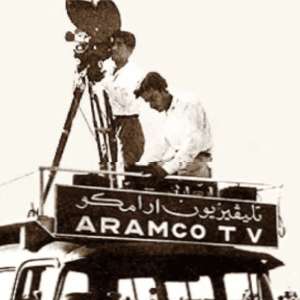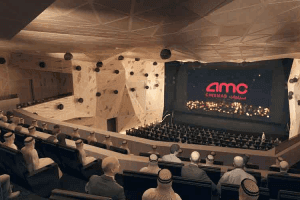Cinema has always been a powerful medium for storytelling, yet for decades, Saudi Arabia, a land deeply rooted in oral traditions, remained largely absent from the global film industry. What began as a few experimental films in the mid-20th century was soon overshadowed by a long-standing ban on cinema. However, the 21st century ushered in a new era, transforming Saudi Arabia from a country with no cinemas to a rapidly growing film industry. The story of Saudi Arabian cinema is one of resilience, cultural shifts, and an ambitious vision for the future.
The First Steps Toward Cinema
Saudi Arabia’s early filmmaking efforts were largely experimental. The first known Saudi film, Al-Thubab (The Flies), was produced in 1950, starring Hassan Al-Ghanim, who is considered the country’s first film actor. During the 1960s and 1970s, filmmaking remained an underdeveloped art form, mostly limited to short films and documentaries, with very little infrastructure to support a full-fledged industry.
One notable milestone during this period was Al-Qattar Al-Mutakassar (The Broken Dam), an experimental short film made in 1972 by Abdulmohsen Al-Mangour. While it did not gain international recognition, it demonstrated the early interest in visual storytelling. Despite these modest beginnings, cinema had not yet become a mainstream cultural force in Saudi Arabia, largely due to conservative societal norms and the absence of institutional support.
A Long Silence

By the early 1980s, religious conservatism played a dominant role in shaping Saudi Arabia’s cultural policies. In 1983, a nationwide ban on public cinemas was imposed, leading to a 35-year absence of commercial movie theaters in the kingdom. The rationale behind the ban stemmed from religious and social concerns, with authorities viewing cinema as a potential threat to traditional values.
During this period, Saudi audiences turned to television and home video entertainment, relying on international films imported via satellite TV, VHS tapes, and later DVDs. Some Saudis even traveled to neighboring countries like Bahrain and the UAE to watch films in cinemas. Meanwhile, a handful of passionate filmmakers continued working in underground spaces, creating short films that were primarily circulated within private circles or online.
The Revival
Everything changed in 2018 when Saudi Arabia, under its ambitious Vision 2030 plan, lifted the cinema ban and reopened theaters across the country. This decision was a game-changer, not only reviving cinema-going culture but also laying the groundwork for a thriving film industry.
And what better way to make a grand comeback than with Black Panther? On 18 April 2018, Saudi Arabia’s first public film screening in 35 years took place at an AMC cinema in Riyadh. The event was attended by government officials, celebrities, and industry leaders, all gathered to witness this historic moment. Now, if you think about it, choosing Black Panther was a pretty ironic yet fitting choice, after all, it’s a film about a once-hidden, technologically advanced kingdom stepping onto the world stage. Sound familiar?
For decades, Saudi cinephiles had been sneaking across borders or relying on bootleg DVDs to get their movie fix. But that night in April, they sat in a cinema, popcorn in hand, legally watching a Hollywood blockbuster. The audience reaction? Euphoric. It wasn’t just a movie; it was a moment that screamed, We’re back, and we’re watching movies on the big screen, just like everyone else!
The country saw a rapid expansion of movie theatres, with a goal to establish over 300 cinemas and more than 2,000 screens by 2030. But beyond infrastructure, there was a newfound emphasis on local storytelling. Saudi filmmakers seized the opportunity to bring their narratives to the screen, leading to a wave of films that started gaining both national and international recognition.

One of the defining moments of this resurgence was the release of Wadjda (2012), directed by Haifaa al-Mansour. Though produced before the official lifting of the ban, it was the first feature film to be shot entirely in Saudi Arabia and the first-ever Saudi submission to the Academy Awards for Best Foreign Language Film. The film, centered around a young girl’s dream of owning a bicycle, was a powerful symbol of change and female empowerment in Saudi society.
In recent years, Mandoob (Night Courier), directed by Ali Kalthami, emerged as the highest-grossing Saudi film, reflecting the growing appetite for locally produced cinema. The rise of the Red Sea International Film Festival in Jeddah has further cemented Saudi Arabia’s commitment to fostering an active film culture, offering a platform for regional and international filmmakers to showcase their work.
A Late but Ambitious Entry

When compared to other Middle Eastern countries, Saudi Arabia’s journey into filmmaking was significantly delayed. Egypt, for instance, has been a cinematic powerhouse since the early 20th century, producing thousands of films and dominating Arab cinema for decades. Iran, despite its strict regulations, has managed to create globally acclaimed films known for their poetic storytelling. Even the UAE and Qatar, with their smaller populations, started investing in film production long before Saudi Arabia lifted its cinema ban.
However, what Saudi Arabia lacks in history, it makes up for in ambition. With government-backed initiatives, massive funding, and an eager audience, the kingdom is positioning itself as a formidable player in the region. Unlike its neighbors, Saudi Arabia is starting from scratch but doing so with the full force of its economic and political will. The question is not whether Saudi cinema will catch up, but rather how fast it will redefine the regional cinematic landscape.
Challenges and Prospects
Despite its rapid progress, Saudi Arabia’s film industry faces unique challenges. While the government has been actively promoting cinema, filmmakers must navigate cultural sensitivities and content restrictions. Striking a balance between artistic freedom and respecting local values remains a crucial aspect of filmmaking in the region.
Additionally, building a sustainable industry requires investment in local talent, film education, and production facilities. Currently, Saudi Arabia is investing heavily in developing filmmaking institutions, and collaborations with international studios are helping accelerate the industry’s growth.
The global film community is now taking notice of Saudi Arabian cinema. With increased government backing, the rise of digital platforms, and the growing recognition of Saudi filmmakers at international festivals, the country is positioning itself as a major player in the Middle Eastern film landscape.
A New Dawn
Saudi Arabian cinema has come a long way, from a restricted art form to a booming industry in just a few years. As new voices emerge and more stories are told, the kingdom’s film industry is likely to continue evolving, offering a fresh perspective on contemporary Saudi life. Whether through socially relevant narratives or ambitious genre films, Saudi cinema is no longer in the shadows—it has stepped confidently into the spotlight, ready to make its mark on the world stage.
Read More:


























